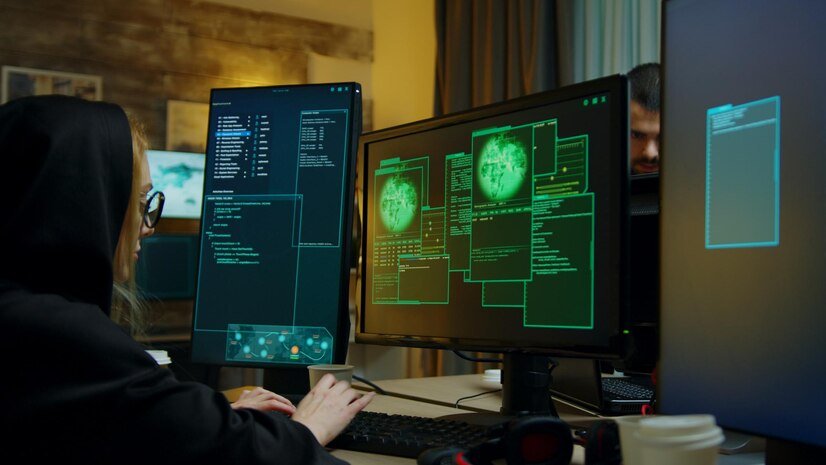Resource Monitors Used in Breaches: A Comprehensive Guide
In today’s digital age, resource monitors used in breaches cybersecurity is more critical than ever. With cyberattacks becoming increasingly sophisticated, organizations need reliable tools to protect their sensitive data and assets. One such tool is the resource monitor—a silent guardian that plays a crucial role in detecting and preventing security breaches. In this blog post, we will explore the significance of resource monitors in cybersecurity, discuss various types of breaches that can exploit them, and provide best practices for securing these invaluable tools. By the end, you’ll have a comprehensive understanding of how resource monitors can enhance your organization’s cybersecurity posture.
Understanding Resource Monitors
What Are Resource Monitors?
Resource monitors resource monitors used in breaches are software or hardware tools that track and analyze the usage of system resources such as CPU, memory, disk space, and network bandwidth. These monitors provide real-time insights into an organization’s IT environment, helping identify performance bottlenecks, track system health, and detect abnormal activities.
Primary Functions of Resource Monitors in IT and Cybersecurity
In the realm of IT and cybersecurity, resource monitors serve several vital functions. They help administrators keep tabs on system health, optimize resource allocation, and ensure that applications run smoothly. Additionally, resource monitors play a pivotal role in identifying potential security threats by flagging unusual activities, such as spikes in CPU usage or unexpected network traffic, which could indicate a breach.
Importance of Resource Monitors in Detecting and Preventing Security Breaches
Resource monitors are essential for maintaining robust cybersecurity defenses. They provide early warnings of potential threats, allowing organizations to take proactive measures before a breach occurs. By continuously monitoring system resources, these tools can detect anomalies that could signify malicious activities, such as data exfiltration or unauthorized access.
Types of Breaches Using Resource Monitors
Data Exfiltration
Data exfiltration involves the unauthorized transfer of sensitive data from an organization’s network to an external entity. Resource monitors can detect signs of data exfiltration by identifying unusual patterns in network traffic, such as large volumes of data transfers to unfamiliar IP addresses.
Ransomware Attacks
Ransomware attacks involve encrypting an organization’s data and demanding a ransom for its release. Resource monitors can help detect ransomware by identifying abnormal spikes in CPU usage or disk activity, which are common indicators of encryption processes.
Distributed Denial of Service (DDoS) Attacks
DDoS attacks flood a target system with excessive traffic, rendering it inaccessible to legitimate users. Resource monitors can detect DDoS attacks by tracking sudden surges in network traffic and alerting administrators to take necessary countermeasures.
Real-World Examples of Breaches Exploiting Resource Monitors
Several high-profile breaches have exploited vulnerabilities in resource monitors. For instance, the 2017 WannaCry ransomware attack, which affected organizations worldwide, was detected by resource monitors that identified abnormal encryption activities. Similarly, the 2020 SolarWinds supply chain attack involved the manipulation of resource monitors to evade detection while exfiltrating sensitive data.
Best Practices for Protecting Resource Monitors

Regular Updates
Keeping resource monitors up to date is crucial for maintaining their effectiveness. Regular updates ensure that these tools have the latest security patches and can detect new types of threats. Organizations should prioritize updating their resource monitors as part of their overall cybersecurity strategy.
Secure Configurations
Configuring resource monitors securely is essential for preventing unauthorized access. This includes setting strong passwords, enabling encryption, and restricting access to authorized personnel only. Secure configurations help ensure that resource monitors themselves do not become points of vulnerability.
Strong Authentication
Implementing strong authentication mechanisms, such as multi-factor authentication (MFA), adds an extra layer of security to resource monitors. MFA requires users to provide multiple forms of verification before accessing the monitor, reducing the risk of unauthorized access.
Network Segmentation
Network segmentation involves dividing an organization’s network into smaller, isolated segments. This practice helps contain potential breaches by preventing lateral movement within the network. Resource monitors can be configured to monitor each segment independently, ensuring comprehensive coverage.
Continuous Monitoring
Continuous monitoring is a proactive approach to cybersecurity that involves regularly reviewing and analyzing system activities. Resource monitors should be configured for continuous monitoring to detect anomalies in real-time. Automated alerts can help administrators respond swiftly to potential threats.
Employee Training
Educating employees about cybersecurity best practices is vital for protecting resource monitors. Organizations should conduct regular training sessions to raise awareness about potential threats and the importance of reporting suspicious activities. Well-informed employees can act as the first line of defense against breaches.
The Future of Resource Monitors and Cybersecurity
Evolving Cybersecurity Threats
The landscape of cybersecurity threats is constantly evolving, with cybercriminals developing new tactics to exploit vulnerabilities. Resource monitors must adapt to these changing threats by incorporating advanced detection algorithms and machine learning capabilities.
AI and Machine Learning Integration
The integration of artificial intelligence (AI) and machine learning (ML) into resource monitors holds promise for the future. AI and ML can enhance the accuracy of threat detection by identifying patterns and anomalies that may be missed by traditional monitoring methods. These technologies can also reduce false positives, ensuring that alerts are meaningful and actionable.
Enhanced Collaboration
Collaboration between organizations, cybersecurity experts, and technology vendors is essential for improving the effectiveness of resource monitors. By sharing threat intelligence and best practices, stakeholders can stay ahead of emerging threats and develop robust defenses.
Cloud-Based Solutions
The shift towards cloud-based solutions is transforming the way organizations use resource monitors. Cloud-based monitors offer scalability, flexibility, and ease of deployment, making them ideal for organizations of all sizes. These solutions can provide real-time insights and centralized management, enhancing overall security.
Conclusion
Resource monitors are silent guardians that play a critical role in cybersecurity. They provide real-time insights into system health, detect anomalies, and help prevent breaches before they occur. By understanding the importance of resource monitors and implementing best practices for their protection, organizations can strengthen their cybersecurity defenses and stay ahead of evolving threats.
Whether you’re a cybersecurity professional, IT manager, or tech enthusiast, staying informed about resource monitors is essential. Implementing the strategies discussed in this blog post can help ensure that your organization’s resource monitors remain effective in detecting and preventing security breaches.




Post Comment